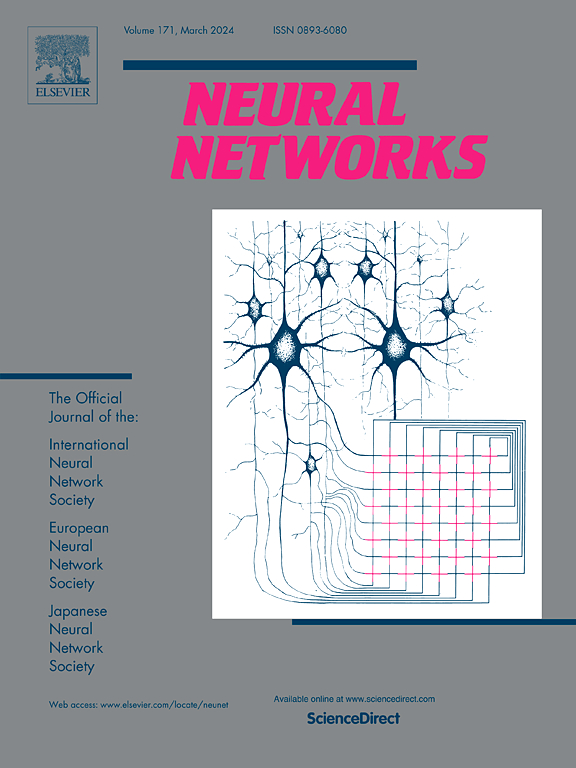Beyond Homophily: Class imbalance graph classification via Rewiring Graph of Graphs
IF 6.3
1区 计算机科学
Q1 COMPUTER SCIENCE, ARTIFICIAL INTELLIGENCE
引用次数: 0
Abstract
Graph Neural Networks (GNNs) have gained prominence as a leading paradigm for graph encoding, achieving notable success in graph classification tasks. This success, however, heavily relies on the assumption of the balanced class distribution in the training data, which often does not align with real-world scenarios. In the face of imbalanced class distributions, the classification results tend to be suboptimal. Previous research have shown that Graph of Graphs(GoG) can effectively capture inter-graph supervisory signals, thereby aiding in the representation of the minority graphs. We argue that existing GoG strategies rooted in the assumption of homophily provide reliable supervision primarily for majority class graphs, while remaining unreliable for minority classes. To address this issue, we introduce a novel framework called GraphBHR (Beyond Homophily Rewiring Graph of Graphs). GraphBHR supplements the GoG with additional heterophily perspectives, allowing for the provision of reasonable supervisory signals for minority classes. To further enhance the network reliability, we have introduced a graph rewiring strategy that optimizes the initial inter-graph relationships. This is followed by GoG propagation for representation learning. We also employ consistency contrastive loss and focal loss to optimize graph representation. Extensive experiments on multi-scale datasets have shown the effectiveness of GraphBHR in handling imbalanced graph classification tasks.
超越同态:通过重新布线图的类不平衡图分类
图神经网络(gnn)作为图编码的主要范例已经获得了突出的地位,在图分类任务中取得了显著的成功。然而,这种成功在很大程度上依赖于训练数据中平衡类分布的假设,而这通常与现实世界的场景不一致。面对不平衡的类分布,分类结果往往是次优的。先前的研究表明,图的图(GoG)可以有效地捕获图间的监视信号,从而帮助表示少数图。我们认为,基于同态假设的现有GoG策略主要为多数类图提供可靠的监督,而对少数类图仍然不可靠。为了解决这个问题,我们引入了一个新的框架GraphBHR(超越同质重新布线图的图)。GraphBHR用额外的异源性视角补充了GoG,允许为少数类提供合理的监督信号。为了进一步提高网络的可靠性,我们引入了一种优化初始图间关系的图重布线策略。接下来是用于表示学习的GoG传播。我们还使用一致性对比损失和焦点损失来优化图表示。在多尺度数据集上的大量实验表明,GraphBHR在处理不平衡图分类任务方面是有效的。
本文章由计算机程序翻译,如有差异,请以英文原文为准。
求助全文
约1分钟内获得全文
求助全文
来源期刊

Neural Networks
工程技术-计算机:人工智能
CiteScore
13.90
自引率
7.70%
发文量
425
审稿时长
67 days
期刊介绍:
Neural Networks is a platform that aims to foster an international community of scholars and practitioners interested in neural networks, deep learning, and other approaches to artificial intelligence and machine learning. Our journal invites submissions covering various aspects of neural networks research, from computational neuroscience and cognitive modeling to mathematical analyses and engineering applications. By providing a forum for interdisciplinary discussions between biology and technology, we aim to encourage the development of biologically-inspired artificial intelligence.
 求助内容:
求助内容: 应助结果提醒方式:
应助结果提醒方式:


